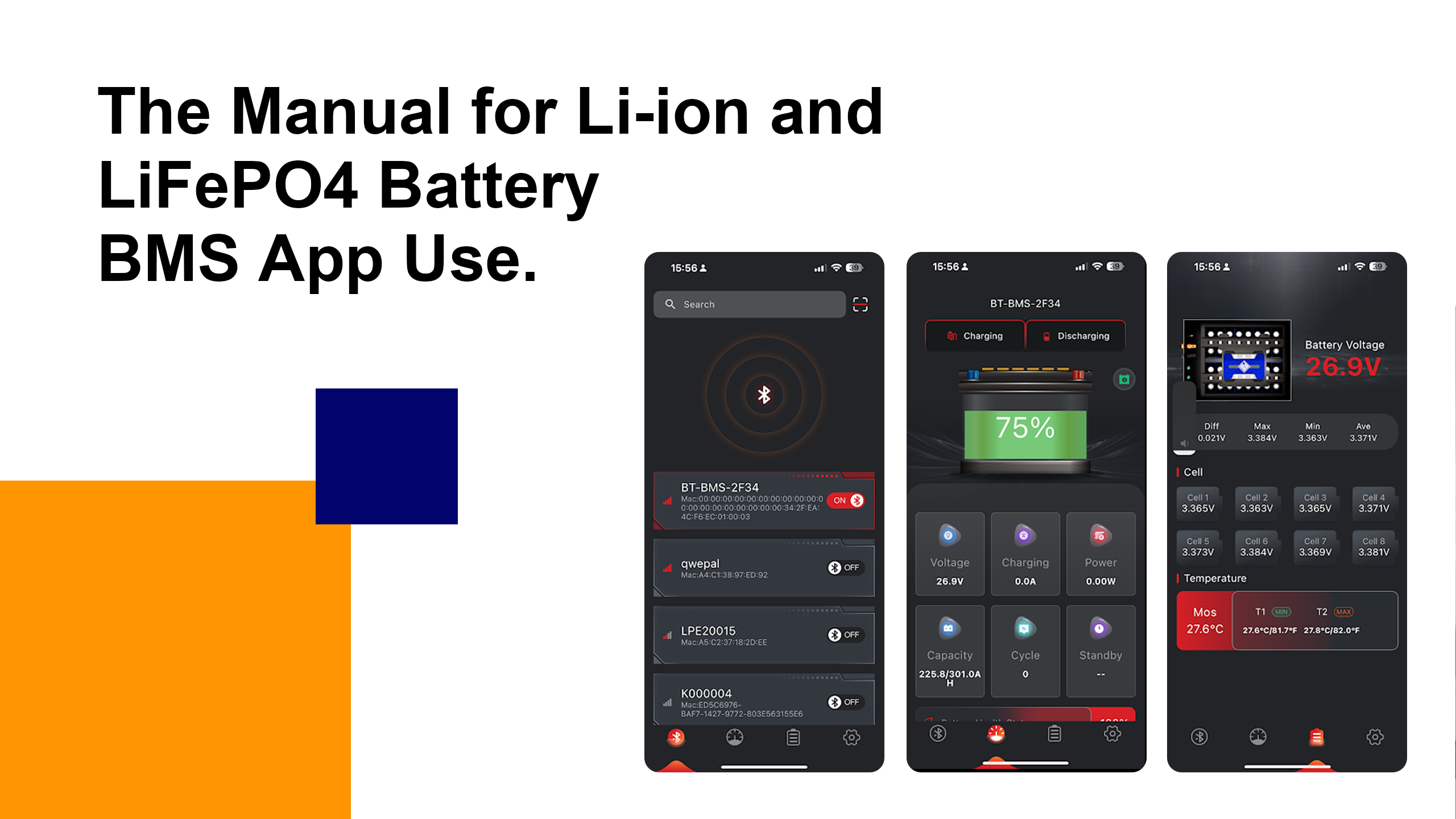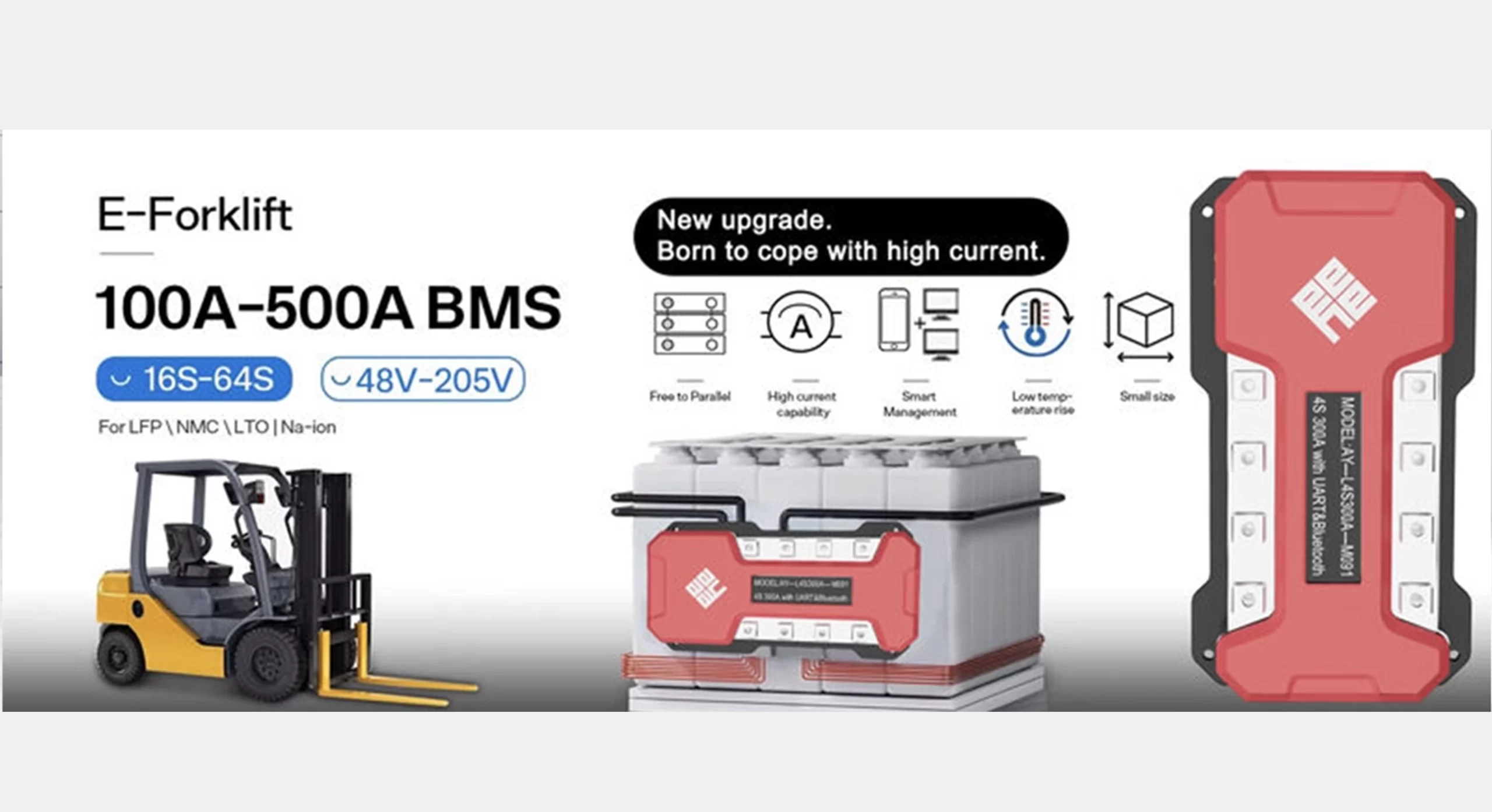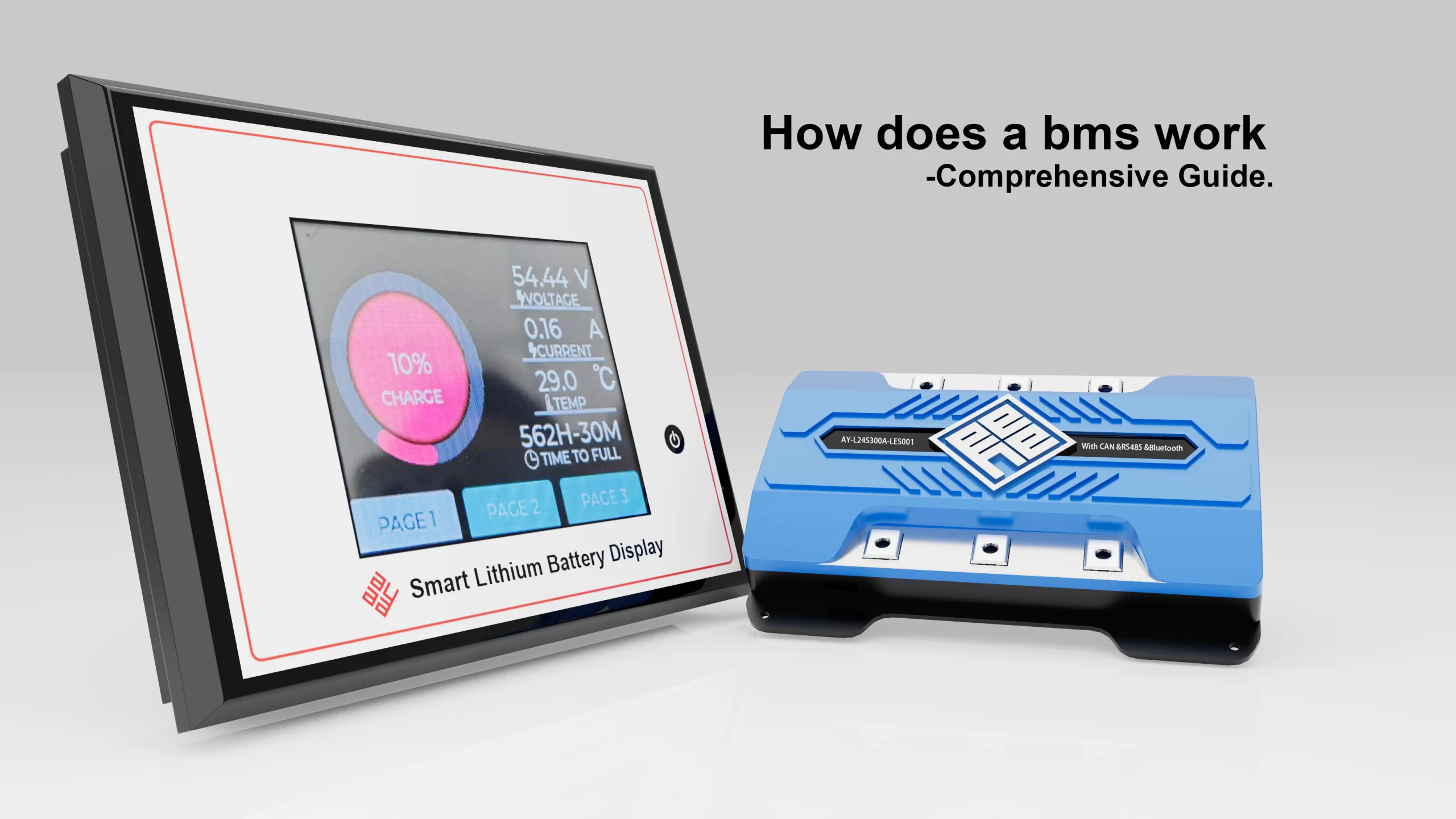Home About Us EVENTS & NEWS The Manual for Li-ion and LiFePO4 Battery BMS App Use
The Manual for Li-ion and LiFePO4 Battery BMS App Use
The Manual for Li-ion and LiFePO4 Battery BMS App Use
Smart technologies like a BMS app are revolutionizing battery management in the energy storage and electric mobility of today. A BMS app gives you important information and control. This is true whether you use Li-ion or LiFePO4 batteries. This promotes optimal performance and safety. This article examines the purposes, advantages, and prospects of BMS applications in energy systems.What is a BMS App?
A BMS app links to your battery management system. It can connect via Ethernet, Bluetooth, or Wi-Fi. It provides instant access to battery information, including temperature, charge cycles, voltage, and current. The user interface of this software is simple to use. It facilitates the monitoring and management of batteries in solar storage systems, boats, electric cars, and other devices. Users can set protective parameters, examine battery status, and get alarms with the BMS app.
Real-Time Monitoring and Control
Real-time battery performance monitoring is the main function of a BMS app. The voltage of each cell, the general health of the pack, and the balance status are all visible to users. This lowers danger and lengthens battery life by enabling quick reactions to anomalies like excessive temperatures or imbalances. Tracking in real time is crucial for LiFePO4 and Li-ion batteries. This is a result of their sensitivity to deep discharge or overcharging. There is more to the BMS app than just monitoring. It enables remote control of functions including modifying modes, lowering voltage cutoffs, and shutting off the battery. This fine-grained control protects complex systems and provides them with flexibility.Compatibility with Li-ion and LiFePO4 Batteries
Compatibility across battery chemistries is one of the advantages of contemporary BMS applications. Regarding cycle life, temperature tolerance, and voltage range, Li-ion and LiFePO4 batteries differ from one another. A well-designed BMS application supports both kinds by providing individualized settings and algorithms. Typically, a LiFePO4 battery requires a lower cut-off voltage. Additionally, it functions securely in hot weather. The app allows you to set this. Firmware updates are also possible with advanced BMS apps. This enables them to modify protection strategies as necessary and function better with new battery types.Safety Features and Alerts
Safety of batteries is crucial. A BMS app’s real-time alerts help avert major malfunctions. The app will notify the user if the temperature rises too high. Additionally, it notifies the user if there is an imbalance in the cells. If the current flow is abnormal, the app also alerts the user. Certain applications provide automated shutdown processes or relay control for disconnecting chargers and loads. The BMS app also tracks past error codes and fault reports. This helps technicians and users find problems quickly. This can stop fires or expensive damage in dangerous settings or in mission-critical applications like maritime systems.Key Usage Scenarios
The BMS app can be used for a wide range of purposes:- Electric vehicles (EVs): Monitor regenerative braking, estimate range, and track charge status.
- Solar Energy Storage: Keep an eye on energy dispatch, SOC, and solar charging efficiency.
- Boats and RVs: Ensure that you use batteries safely in moving, humid conditions.
- UPS and Backup Systems: Check the lifespan and readiness of the batteries in your backup and UPS systems. This will help ensure they work continuously.
- Smart Homes: Connect to Internet of Things technology to automate energy management.
Installation and Configuration
There are several processes involved in setting up a BMS app:- Connect Hardware: Install the communication-capable smart BMS board.
- Get the app: Select the appropriate version of the BMS app (PC, Android, or iOS).
- Pair Devices: Pair your battery with a device using Bluetooth or Wi-Fi.
- Adjust the settings: Enter the battery pack’s parameters, such as its voltage limitations and cell count.
- Establish Protection Boundaries: Establish acceptable ranges for voltage, current, and temperature.
Maintenance and Best Practices
For the best app performance, regular inspections and upgrades are necessary. To get the newest features and bug fixes, update your BMS app. Make regular system data backups, particularly for bigger battery arrays. To keep the signal strong, clean the terminals and look for rust. For real-time updates, turn on push notifications. As the battery ages, change settings and log in often to monitor its health. When internal resistance rises or capacity decreases, the BMS app can alert you.Smart Integration and Future Trends
The BMS app is being integrated with cutting-edge technology as energy systems change:- Cloud platforms: Uploading data for remote diagnostics and analytics.
- AI algorithms: energy optimization and predictive maintenance.
- IoT Compatibility:Connect BMS to smart devices for automatic control through IoT compatibility.
- Blockchain for Security: Make sure fleet applications have unchangeable logs.
Technical Considerations
The following should be considered when choosing a BMS app:- Support for multiple platforms: Make sure it’s accessible on Windows, iOS, and Android.
- Firmware Upgradability: Enables extended use of features that change over time.
- Data Visualization:Real-time diagnostics, logs, and charts are examples of data visualization.
- Security Features: Features for security include encrypted communication and password protection.
Economic and Operational Benefits
Longer battery life and reduced maintenance expenses are the results of using a BMS app. It avoids malfunctions that would require costly replacements or downtime. This leads to a higher return on investment for commercial users. For individual users, it signifies tranquility. Additionally, energy use improves in efficiency. You can maximize discharges and charge batteries during off-peak hours. Cost reductions are a direct result of these operational efficiencies.Driving the Future of Energy Control
Using a BMS app is a strategic decision rather than merely a technical one. Smart battery management becomes essential as renewable energy and electric transportation continue to grow. By bridging the gap between people and intricate battery systems, a BMS app makes operation safe, effective, and intelligent. Businesses such as Shenzhen Ayaa Technology Co., Ltd. pave the path to more intelligent energy consumption. Their focus on innovation ensures that users will have reliable and smart battery management technologies for their future needs. An essential component of any contemporary energy storage system is the BMS app. It provides integration possibilities, control features, and adaptability. Selecting the appropriate BMS application is crucial, regardless of your level of experience as a system integrator or hobbyist. It enables you to use energy more effectively, safely, and intelligently.Contact UsSHARE
News Recommend
-
How does AYAATECH BMS work in E-scooters
01/16/2025















